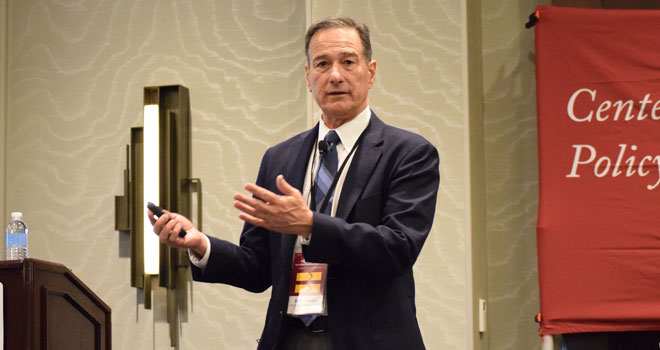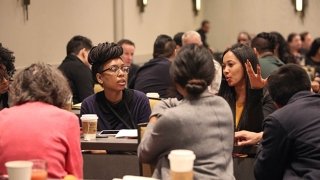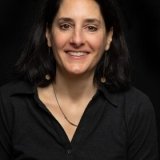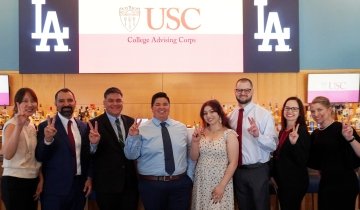At a gathering last week of national experts on admission and enrollment management in higher education, one statistic stood out among all the others: In 2016, 38 colleges had more students enrolled from families with incomes in the nation’s top 1 percent than from those in the bottom 60 percent.
“Toward More Equitable and Expert Practice,” the 10th annual conference organized by USC Rossier’s Center for Enrollment Research, Policy and Practice (CERPP), went beyond discussions on assessing student performance to scrutinize the biases and limitations that prevent enrollment managers from improving their own practices.
“We need to stop thinking about diversity as part of admission policy at the margins to enact broader change that will harvest a demographic dividend,” said CERPP Associate Director Emily Chung, paraphrasing a call to action from a previous CERPP conference.
While the two-day event featured panels on perennial topics such as standardized testing, the test-optional movement and the college application process, it also addressed the promise of performance assessment and how to overcome bias in enrollment management.
An opening keynote from Mary Helen Immordino-Yang, professor of education, psychology and neuroscience at USC Rossier, set the tone for the conference by exploring the role of emotions in learning.
“To discern what really matters, intentions, values, historical precedence and our ability to conjure a reflective understanding of meaning is what we should be promoting and assessing across all disciplines,” she said.

Common ground
The conference’s examination of practices focused on one of the most central components of admissions work: Standardized testing. Two panels were drawn from contributions to the newly released book Measuring Success: Testing, Grades, and the Future of College Admissions (Johns Hopkins Press, 2018). One of the volume’s editors, Jack Buckley, is now senior vice president at the American Institutes for Research, but he began the project when he was still employed by the College Board and also had a critical role in the redesign of the SAT. But in his methodical overview at the conference, Buckley conceded that standardized testing is not perfect, acknowledging resource limits, difficult tradeoffs—such as cost and time constraints—and conflicting political pressures.
The test-optional movement has been around since 1969, when Bowdoin College eliminated the SAT requirement. In discussing his chapter from Measuring Success, CERPP Executive Director Jerry Lucido concluded that standardized testing is too useful to go away but positioned test-optional strategies as a complement, not a substitute.
“Together, standardize testing and the test-optional movement hold the seeds of better and more highly informed practice,” he said, “as they can mitigate the negative impact of test shortcomings and misuse while enlightening admission decisionmakers with information that can lead to better decisions, better academic advising and better results for students.”
All of the above
But the broader context for the conference had less to do with measuring the success of students than it did with assessing the performance of admission and enrollment managers.
“You operate at the nexus of high school and college,” said Linda Darling-Hammond, president of the Learning Policy Institute and a professor emeritus at Stanford University, who spoke about LPI’s newly published report, “The Promise of Performance Assessments: Innovations in High School Learning and College Admission.” The brief describes how portfolios and capstone projects can not only improve learning for high school students but can offer a better method for admission officers to assess prospective college students.
“These approaches, albeit in a small number of places across the county, have resulted in students entering college at much higher rates than average and who complete college at twice the rate as the national average, despite socio-economic status,” said Darling-Hammond, who added that the digital portfolio is designed for ease-of-use by admission officers
USC Rossier Professors Darnell Cole and Shafiqa Ahmadi, co-directors of the Center for Education, Identity and Social Justice, revisited that nexus of high school and college by explaining why enrollment professionals need to examine themselves as rigorously as they assess students.
“Examining your identity and how it impacts your practice,” said Cole, “will not only improve your behaviors, strategies and decision-making, but it can also lead to transformative institutional outcomes.”







